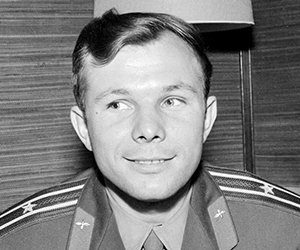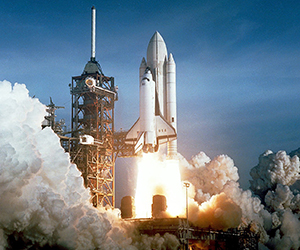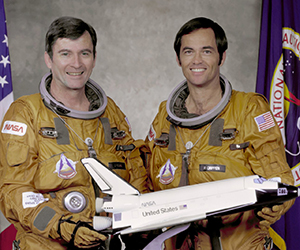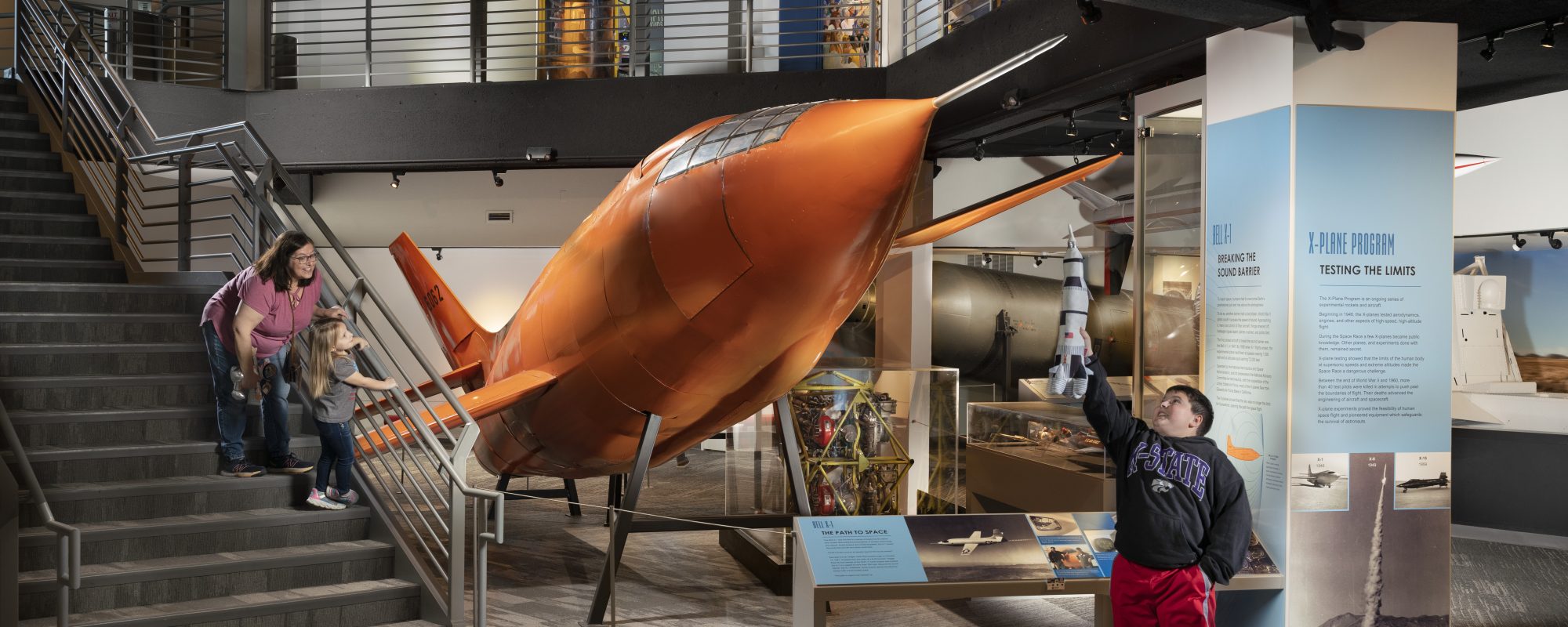Yuri Gagarin
On April 12, 1961, Yuri Gagarin became the first human to enter space and the first to orbit Earth.
Vostok 1’s mission lasted for 108 minutes, and Gagarin and his capsule completed one orbit of Earth. The R-7 rocket which lifted Gagarin into space had a 50% success rate at this point in history. Thankfully, Gagarin’s launch was successful, and he experienced the wonders of seeing Earth from space. He ate, took notes, and operated the spacecraft during his time in orbit.

Things were progressing nominally until just after the retrorockets fired for reentry. A tumbling motion, about thirty degrees per second, put Gagarin into an uncontrolled spin. The spherical descent module didn’t separate from the instrument section of the spacecraft as planned. Eventually, the two parts of the spacecraft separated as they were supposed to, allowing the capsule and Gagarin to return to Earth.
Unlike other spacecraft, Cosmonauts ejected from their Vostok capsule before landing. A hatch opened on the side of the spacecraft and seconds later the Cosmonaut, still in their seat, ejected out and landed by parachute.
The capsule landed harder than was survivable, which is why cosmonauts had to bail out early. Gagarin landed in a field, and after walking a bit, he saw a woman who helped him find a telephone so he could radio back that he was ok.
Gagarin toured the world on goodwill tours and even met Gemini 4 astronauts at the Paris International Air Show in June of 1965.
Sadly, Yuri never flew in space again, and he died in a crash in a MiG-15 trainer jet.
He, along with 13 others lost in the pursuit of spaceflight are memorialized on a plaque left behind by Apollo 15 astronauts. They also left behind a small figure representing the fallen astronauts and cosmonauts. You can read more about the replica Fallen Astronaut statuette we have in our collection here.
Image: Wikipedia
STS-1
On April 12, 1981, twenty years after Yuri Gagarin’s historic first spaceflight, John Young and Robert Crippen lifted off into the history books as the first crew of the Space Shuttle program on STS-1.
The Shuttle Columbia lifted off seconds after 7 a.m. Eastern time from Pad 39A. Their mission was the first time that astronauts had flown on a launch vehicle that hadn’t previously been tested.

The Shuttle stack, which consisted of the orbiter, solid rocket boosters (SRBs), and external tank (ET), flew together for the first time. Commander John Young, a Gemini and Apollo veteran, and rookie astronaut Robert Crippen spent two days in space, testing orbiter systems and demonstrating “safe launch into orbit and return to landing of Columbia and its crew.”

During liftoff, the water sound suppression system on the launch pad didn’t fully dampen the effects of the massive SRBs. The overpressure wave those engines created damaged tiles on the orbiter, with 16 lost and 148 damaged. These tiles weren’t in critical areas on the orbiter, so their loss didn’t pose a threat to the crew’s safety or to the success of the mission.
Young and Crippen landed at Edwards Air Force Base on April 14, having completed the first flight of the Shuttle program.
Images: 1. Columbia is seen here at launch. Notice the white external tank. The white ET was used during STS-1 and STS-2. White paint was used to protect the tank from ultraviolet light. Although this didn’t turn out to be a problem, so it was decided to begin using the unpainted tank beginning with STS-3 – not painting the ET tank white saved approximately 600 pounds. 2. STS-1 crew John Young and Robert Crippen.
Images: NASA


